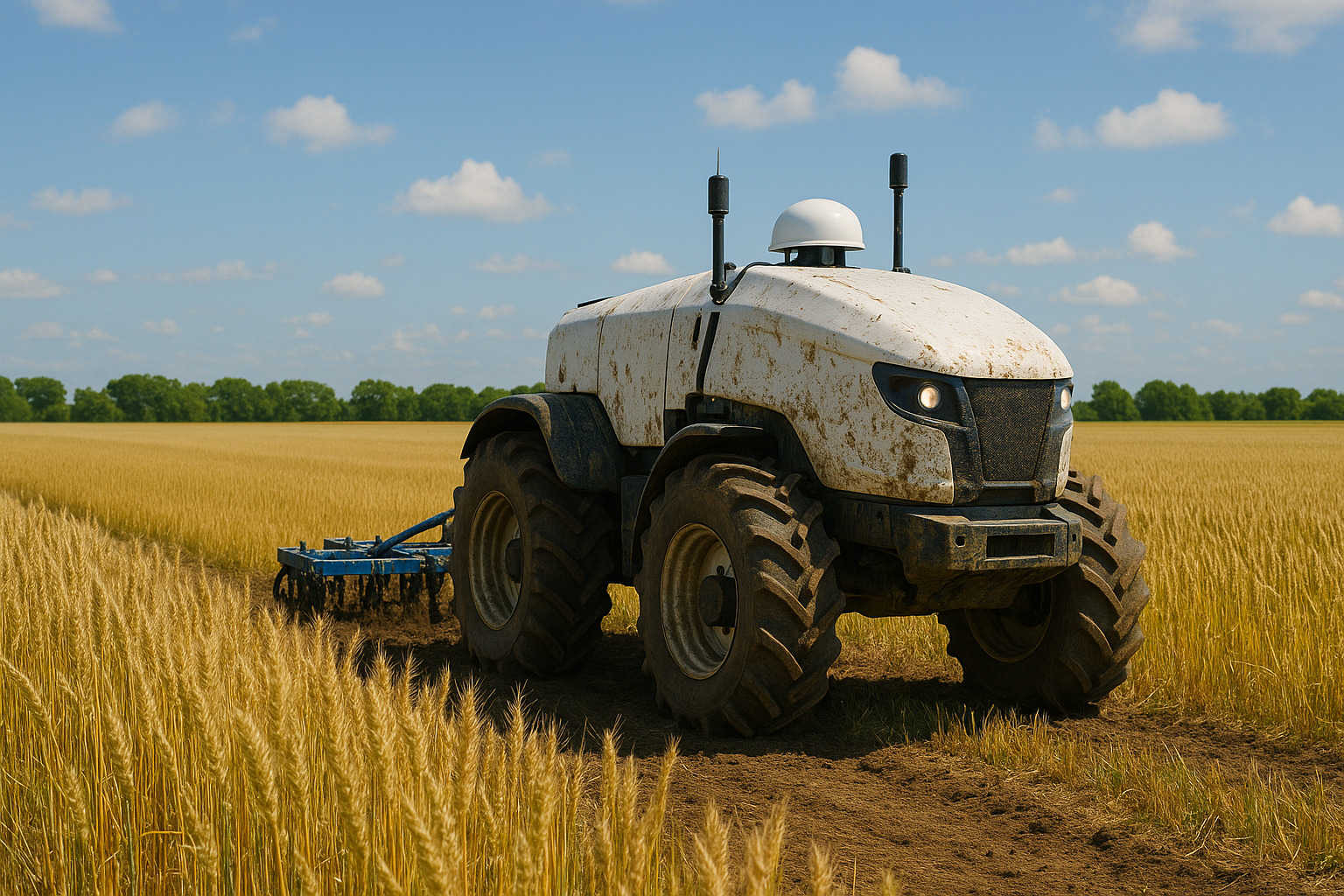🌾 The Tractor That Never Sleeps: How 75 HP Farm Robots Are Redefining Agriculture
Imagine waking up at dawn, looking out over your fields, and seeing the wheat perfectly aligned, the soil freshly tilled, the weeds vanished. No roaring engine. No workers in sight. Just silence. Yet, everything has been done.
It's not magic — it’s a 75 HP autonomous farm robot, and it’s working for you. Even while you sleep.
🚜 The Silent Revolution in the Fields
For decades, farming has been tied to a near-mythic image: weather-worn men driving massive machines, sunburned faces, calloused hands, and seasons defined by sweat. Today, that story is being rewritten — not by artificial intelligence in theory, but by real machines running on diesel, GPS, sensors, and algorithms.
These robotic tractors are not futuristic toys. They’re full-fledged machines: 75 horsepower, standard three-point hitch, 24/7 autonomy, and full compatibility with traditional implements. But with one radical difference: no one sits in the driver's seat.
🤖 How a Machine That Doesn’t Need You Actually Works
One of the most talked-about models is the AgXeed AgBot, joined in Italy by Atomatika, a crawler-type robot that can climb slopes of up to 70%. Both share the same high-tech DNA:
- A 75 HP diesel engine, often with electric transmission for added efficiency and range.
- RTK GPS with 2 cm accuracy. Translation: it can plant seeds like a surgeon makes incisions.
- LiDAR sensors and smart cameras that allow it to detect obstacles, stop if needed, and map the terrain like a drone.
- Generous fuel tanks — up to 220 liters — for up to 24 hours of continuous, unattended work.
- A remote-control management app, letting you plan routes, set speeds, and monitor operations from your phone — or the beach.
🌍 But Do We Really Need All This?
Yes, and here's why: the farming world is running out of hands.
According to FAO and EU data, agriculture in Europe is losing thousands of workers each year. Average age of Italian farmers? Nearly 60.
Who will drive the tractors 20 years from now? Maybe no one. But these 75 HP autonomous robots — they never retire.
And then there’s precision. Every drop of water saved, every perfectly aligned weed pass, is money in the bank and chemicals spared. These robots don’t take breaks, don’t forget rows, and don’t make crooked lines. That makes them ideal for:
- High-value vineyards (where every vine matters),
- Intensive vegetable production,
- Orchards on steep slopes,
- Or broad-acre fields where efficiency means survival.
⚖️ Costs, Concerns, and Myths to Bust
Of course, it's not all roses.
A robot like the AgBot can cost over €200,000. And it requires:
- A strong RTK GPS signal,
- Stable data connectivity (hello, rural Wi-Fi?),
- Trained operators who can handle the software.
But here's the twist: you don’t need to be born into farming anymore. You just need to be smart.
With digital agriculture, the job evolves. And the 75 HP robotic tractor is the clearest sign of that shift: from muscle to microchip. From sweat to software.
🧠 Is It Truly Intelligent? Not Yet.
Let’s clear this up: these aren’t sentient machines. They don’t "think". They don’t make complex decisions. They’re not going to rescue runaway chickens.
They are perfect executors. But they’re also vulnerable: one wrong command, a signal lost, or a GPS hiccup — and it all stops.
They’re not replacing the farmer. They’re evolving the farmer.
And that might be the most powerful shift: agriculture isn’t dying — it’s transforming.
🔮 Tomorrow: Swarms of Little Robots
If today we’re talking about “driverless tractors,” tomorrow we’ll see something even more radical. Instead of one big robot, imagine swarms of small autonomous machines, each handling micro-tasks: planting, spraying, monitoring, harvesting. Coordinated by central AI, powered by solar panels.
A bit like a high-tech ant colony, where every unit serves the land in silence. No complaints. No sleep.
The 75 HP farm robot is more than a machine.
It’s a threshold: the point where agriculture shifts from heritage to design.
A new design that brings together engineers, coders, agronomists, and dreamers.
And for once, it doesn't destroy human labor — it frees it.
The land doesn’t change. But those who work it do.








Leave a Comment